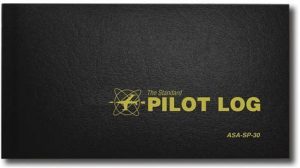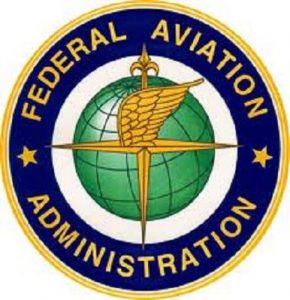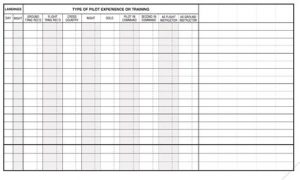Logging PIC and SIC Flight Time
I am frequently asked questions about logging flight time. One would hope that a topic so important to airmen certification and currency would be spelled out fairly clearly in the Federal Aviation Regulations (“FAR”). Unfortunately, that isn’t the case. 
This topic came up recently for a company that was trying to ensure that its pilots were logging their flight time correctly. So, I thought I would try to provide some clarity in a few fairly common scenarios.
Applicable Law
Before we get to the scenarios, it is important to understand the regulations that govern and/or impact logging of flight time.
FAR §61.5l(e)(l)(i) states, in relevant part, that a sport, recreational, private, or commercial pilot may log pilot in command (“PIC”) time for the time during which that pilot is “the sole manipulator of the controls of an aircraft for which the pilot is rated or has privileges.” When referencing aircraft controls, The FAA is referring to flight control systems, such as the yoke, rudders, power, trim, yaw dampener, auto-pilot, etc. These systems control the flight of the aircraft, which is in contrast to communication and navigation radios, and other systems within the aircraft that do not directly control the aircraft’s flight.
For FAA purposes, a pilot logs flight time primarily to qualify for or maintain an airman certificate or rating. While a pilot may wish to keep track of other flight time (e.g., “ride-along” time where the pilot is neither a required crewmember or the sole manipulator of the controls), that time is not flight time that should be logged with the flight time a pilot maintains for qualification or currency purposes. If the pilot chooses to keep track of time that is not for purposes of qualification or currency, that time should be maintained separately from time logged for FAA purposes.
FAR §61.5l(e)(1)(iii) further states that a private or commercial pilot may log PIC time for the time during which that pilot acts as PIC of “an aircraft for which more than one pilot is required under the type certification of the aircraft or the regulations under which the flight is conducted.”
Under FAR §61.51(f) a person may log second in command (“SIC”) time only when more than one pilot is required by the aircraft’s type certificate (e.g., requiring a PIC and SIC) or by the regulations under which the flight is being conducted. The SIC must also hold the appropriate category, class, and ratings for the aircraft being flown and, if flying internationally, a pilot type rating.
 The term “rated,” as used in FAR §61.5l(e), refers to the pilot holding the appropriate aircraft ratings (category, class, and type, if a type rating is required) and for the purpose of logging PIC time under FAR §61.51(e), a pilot must hold ratings for the aircraft rather than for the conditions of flight.
The term “rated,” as used in FAR §61.5l(e), refers to the pilot holding the appropriate aircraft ratings (category, class, and type, if a type rating is required) and for the purpose of logging PIC time under FAR §61.51(e), a pilot must hold ratings for the aircraft rather than for the conditions of flight.
Additionally, in order to act as a safety pilot under FAR §91.109, the person must possess at least a private pilot certificate with category and class ratings appropriate to the aircraft being flown, although the safety pilot need not be instrument rated or instrument current.
Scenario 1
A company conducts operations under FAR Part 91 using an aircraft which is type-certificated for single-pilot operations. The PIC holds the proper type rating to fly the aircraft as a single pilot. The company’s policy requires two pilots onboard at all times, even though the plane is type certificated for single-pilot operations. The second pilot designated by the company as an SIC holds an SIC privileges only type rating.
What Time Can Be Logged?
-
Even though the company requires a second pilot, because the aircraft is type-certificated for a single pilot, and neither the operation nor the regulations require two pilots, the second pilot designated by the company as an SIC would not be a required crewmember and would not be eligible to log the time as SIC. The aircraft is type rated as a single pilot aircraft and an SIC is not required. Thus, the second pilot designated by the company as an SIC is not a required flight crewmember, and cannot log the time as SIC.
-
Because the second pilot does not hold a PIC type rating in the aircraft, even if the second pilot designated by the company as SIC was the sole manipulator of the controls he or she could not log the flight time as PIC. However, if that pilot did hold a PIC type rating in the aircraft then he or she could log the flight time as PIC when he or she was the sole manipulator of the controls.
-
If the PIC also happened to be a certificated flight instructor, the second pilot designated by the company as SIC could log some of the flight time as instructional time, and also log cross-country, night, and instrument flight time, although the PIC, who is also acting as a Certified Flight Instructor, would need to make appropriate logbook entries for the SIC student.
-
Also, if the PIC chooses to fly a portion of the flight under a view limiting device, and the SIC acts as safety pilot, the second pilot designated by the company as SIC could log that time he acted as safety pilot as SIC time. Under this scenario, the second pilot designated by the company as SIC would be a required crewmember for the portion of the flight when the PIC is under the hood. The second pilot designated by the company as SIC would need to hold the appropriate category and class ratings for the aircraft. However, this logging of SIC time when acting as a safety pilot is not the same as acting as an SIC.


 operation for the purpose of conducting several practice approaches in order to maintain instrument currency. Both pilots have appropriate ratings for the aircraft. To simulate instrument flight rules (“IFR”) conditions while flying in visual meteorological conditions (“VMC”), Pilot A puts on a view-limiting device after takeoff and Pilot B acts as a safety pilot for that portion of the flight. Pilot A is the sole manipulator of the controls throughout the entire flight.
operation for the purpose of conducting several practice approaches in order to maintain instrument currency. Both pilots have appropriate ratings for the aircraft. To simulate instrument flight rules (“IFR”) conditions while flying in visual meteorological conditions (“VMC”), Pilot A puts on a view-limiting device after takeoff and Pilot B acts as a safety pilot for that portion of the flight. Pilot A is the sole manipulator of the controls throughout the entire flight.
